10 Chipsets Similar to Dimensity 6080
The Dimensity 6080 was first introduced in June 2023, making its global debut on the Infinix Note 30. Soon after, the Tecno POVA 5 Pro and Redmi Note 13 also featured this chipset.
Generally, you’ll find the Dimensity 6080 in smartphones priced around $130 to $150. If you see a phone in this price range with the Dimensity 6080, you can expect solid performance—even for heavy games like Genshin Impact.
That’s no surprise since the Dimensity 6080 scores an impressive 424,581 points on AnTuTu v10. This score means it can run Genshin Impact smoothly without lag, even on low to medium graphics settings.
The chipset itself has an octa-core processor with two Cortex A76 cores running at 2.4 GHz, six energy-efficient Cortex A55 cores at 2 GHz, and a Mali G57 GPU with two execution units clocked at 950 MHz. Built using TSMC’s 6nm process, it also offers great power efficiency.
The chipsets most similar to the Dimensity 6080 are the Snapdragon 695 and the Unisoc Tiger T820. These three share close specs and AnTuTu v10 scores. But there are several other chipsets that offer similar performance. Let’s take a look at some of them below.
1. Snapdragon 695

Over time, I’ve noticed how the performance differences between Qualcomm’s Snapdragon 600 and 700 series have become less clear. While the Snapdragon 695 is part of the 600 series, it can match or even beat some Snapdragon 700 series chipsets.
Released in October 2021, the Snapdragon 695 5G aims to bring 5G to mid-range smartphones. It has an integrated Qualcomm X51 5G modem.
In terms of specs, this 6nm chipset features two high-performance Kryo 660 Gold cores based on Cortex A78, running at 2.2 GHz, and six power-efficient Kryo 660 Silver cores based on Cortex A55, running at 2.0 GHz.
For graphics, it uses the Adreno 619 GPU, which offers about 30% better performance compared to the older Adreno 618. Its Spectra 346T ISP supports single cameras up to 108 MP.
For multimedia, the Snapdragon 695 supports Full HD+ displays with refresh rates up to 120 Hz. It’s also powerful enough for 1080p video recording at 60 FPS, though not all phones with this chipset use that feature.
Mid-range phones with this chipset can also have Quick Charge 4+ support, allowing charging up to 100 W. Memory support includes eMMC 5.1 or UFS 2.2 storage.
On AnTuTu v10, the Snapdragon 695 scores 443,714 points—about 5% higher than the Dimensity 6080’s 424,581 points.
In Geekbench 6 tests, it scores 910 points on single-core and 2154 on multi-core. Compared to the Dimensity 6080, that’s 18% better for single-core and 4% better for multi-core performance.
2. MediaTek Helio G99
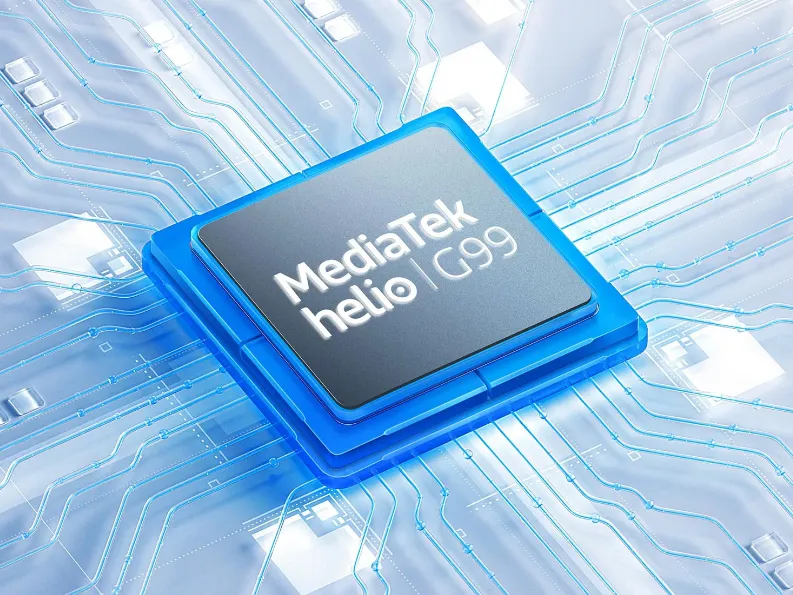
The Helio G99 is built using TSMC’s 6nm process, which helps keep power consumption low while delivering solid performance for everyday tasks.
This chipset has an octa-core CPU with two Cortex-A76 cores running up to 2.2 GHz and six Cortex-A55 cores focused on power efficiency. This setup makes the Helio G99 well-suited for light to medium gaming.
For graphics, it uses the Mali-G57 MC2 GPU, which provides a decent visual experience for casual users. Although the Helio G99 does not support 5G, it offers stable 4G LTE connectivity with good download and upload speeds.
The chipset also supports display refresh rates up to 120 Hz and cameras up to 108 MP. It features MediaTek’s HyperEngine 2.0 Lite technology, designed to improve gaming by optimizing connectivity, power use, and resource management.
3. Unisoc Tiger T820
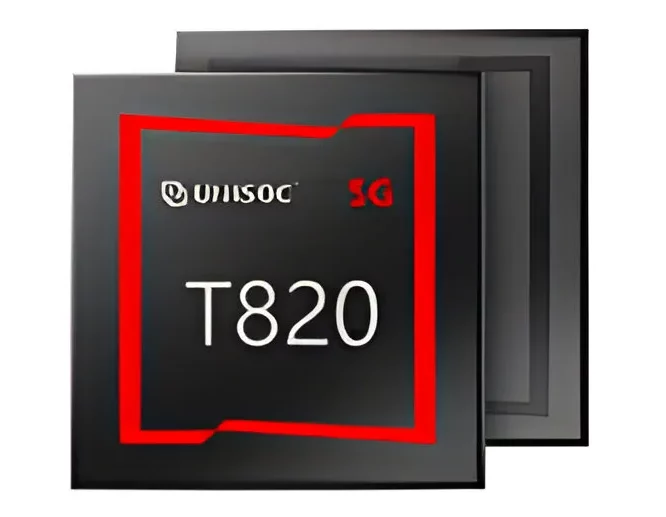
The chipset market is no longer just MediaTek and Qualcomm’s domain—Unisoc has been catching up with some impressive mid-range offerings. One standout is the Unisoc Tiger T820, one of the first Unisoc chips to support 5G.
This SoC is made with TSMC’s 6nm EUV process. It features an ARM v8.2-A architecture with eight cores: one Cortex A76 prime core at 2.7 GHz, three Cortex A76 performance cores at 2.3 GHz, and four power-efficient Cortex A55 cores at 2.1 GHz.
This design gives it an edge over the Dimensity 6080 due to a stronger prime core and higher clock speeds. The graphics are handled by a Mali G57 MP4 GPU with four cores, although it runs at 780 MHz, slightly slower than the Dimensity 6080’s Mali G57 GPU, which runs at 950 MHz with only two cores.
What really stands out is the Tiger T820’s multimedia support. It can handle displays up to 3440 x 1440 pixels and supports 4K video recording at 60 FPS. It also supports faster UFS 3.1 storage, compared to the Dimensity 6080’s UFS 2.2 and eMMC 5.1 support.
In comparison, the Dimensity 6080 supports a maximum display resolution of 2520 x 1080 pixels and video recording capped at 2K at 30 FPS.
Performance-wise, the Unisoc Tiger T820 scores slightly better than the Dimensity 6080. On AnTuTu v10, it scores 492,273 points, about 16% higher than the Dimensity 6080’s 424,581 points.
On Geekbench 6, the Tiger T820 gets 761 points for single-core and 2300 points for multi-core. Its single-core score is just 2% lower than the Dimensity 6080, while the multi-core score is 11% higher.
4. Snapdragon 685

The Snapdragon 685 is a mid-range chipset from Qualcomm designed to balance performance and power efficiency. Built using a 6nm process, it offers good battery life while delivering reliable performance for affordable smartphones.
The chipset features an octa-core CPU with four high-performance Kryo 265 Gold cores based on Cortex-A73, clocked up to 2.8 GHz, and four efficient Kryo 265 Silver cores based on Cortex-A53. This setup is well-suited for everyday tasks like multitasking, social media, web browsing, and video streaming.
For graphics, the Snapdragon 685 uses the Adreno 610 GPU, which handles light to medium gaming smoothly. While not made for heavy gamers, it performs steadily at standard graphics settings.
The Snapdragon 685 supports Full HD+ displays with refresh rates up to 120 Hz. Its camera support includes sensors up to 64 MP, powered by the Qualcomm Spectra ISP for good image processing.
Although it doesn’t support 5G yet, the chipset offers solid connectivity through the Snapdragon X11 LTE modem, with download speeds up to 390 Mbps and upload speeds up to 150 Mbps. It also supports Wi-Fi 5, Bluetooth 5.1, and various satellite navigation systems.
5. MediaTek Dimensity 1080
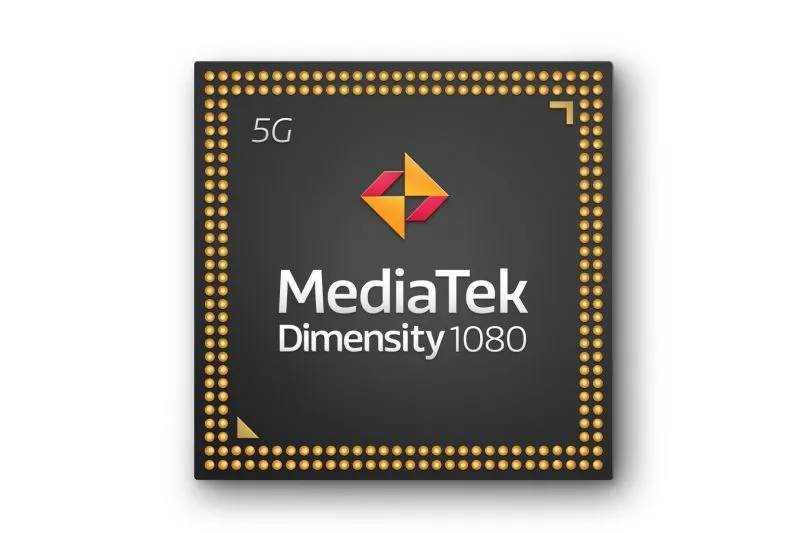
The MediaTek Dimensity 1080 is a high-end mid-range chipset built on TSMC’s 6nm process. It delivers strong power efficiency and noticeable performance gains compared to the Dimensity 6080.
Its octa-core CPU includes two Cortex-A78 cores running up to 2.6 GHz, along with six power-efficient Cortex-A55 cores. This configuration handles heavy apps and multitasking smoothly.
For graphics, the Dimensity 1080 uses the Mali-G68 MC4 GPU, which offers a smoother gaming experience at medium to high settings. It supports Full HD+ displays with refresh rates up to 120 Hz.
On the camera front, the Dimensity 1080 impresses with support for main cameras up to 200 MP and 4K HDR video recording. Features like AI image processing and efficient ISP help produce sharp and vibrant photos and videos.
The chipset supports 5G connectivity with an integrated sub-6 GHz modem and is compatible with Wi-Fi 6 and Bluetooth 5.2. MediaTek’s HyperEngine 3.0 technology further boosts gaming by optimizing network management and power use.
According to AnTuTu benchmark results, the Dimensity 1080 scores around 520,000 points, making it a strong choice in the upper mid-range segment.
6. MediaTek Dimensity 6300

The MediaTek Dimensity 6300 is built using TSMC’s 6nm process. This chipset is a good choice for smartphones that need strong performance while keeping power use low.
It features an octa-core CPU with two Cortex-A76 cores running up to 2.4 GHz for high-speed tasks, along with six efficient Cortex-A55 cores that save battery during lighter activities. This setup helps the Dimensity 6300 run apps smoothly, including light multitasking and social media.
For graphics, the chipset uses a Mali-G57 MC2 GPU. It handles casual games and multimedia well. While it’s not ideal for heavy gaming, it’s enough to play popular titles at low to medium settings.
Another advantage is support for FHD+ resolution and a refresh rate of up to 120Hz. This makes scrolling and video playback look smoother. It also supports cameras up to 108MP and video recording up to 2K.
On the connectivity side, the Dimensity 6300 supports both 5G SA and NSA networks, as well as Wi-Fi 5 and Bluetooth 5.2. It includes MediaTek’s 5G UltraSave 3.0, a power-saving feature that reduces battery drain while using 5G.
In AnTuTu benchmarks, the Dimensity 6300 scores between 420,000 and 440,000 points. This shows it performs competitively for a mid-range phone, especially if you value power efficiency and 5G over top-level gaming.
7. Exynos 1330
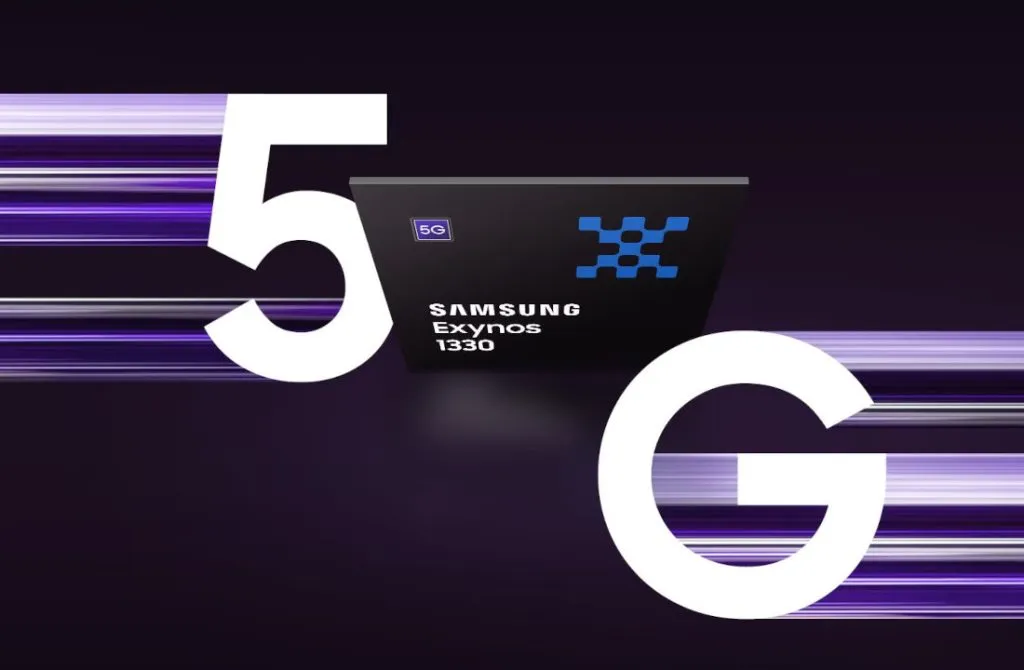
Samsung surprised many by launching the Exynos 1330 in March 2023 as a mid-range chipset with 5G support. It’s made with a 5nm process, which offers excellent power efficiency for its class.
The Exynos 1330 has eight cores: two high-performance Cortex A78 cores clocked at 2.4 GHz and six power-saving Cortex A55 cores running at 2 GHz.
This chipset, with a 5W TDP, includes two Mali G68 GPUs that can reach speeds up to 950 MHz. It supports eMMC and UFS 2.2 storage options, plus LPDDR4x and LPDDR5 RAM.
For photography, the Exynos 1330 supports cameras up to 108MP and can record 4K video at 30 FPS. To deliver a great visual experience, it supports Full HD+ screens with a 120 Hz refresh rate. The Samsung Galaxy A14 5G and Galaxy M14 5G are the first phones to use this chipset, both priced around $130 to $150.
On the AnTuTu v10 benchmark, the Exynos 1330 scored 431,201 points, just 2% higher than the Dimensity 6080’s 424,581 points.
In Geekbench 6 tests, it scored 933 points on single-core and 2142 on multi-core tests. These results are better than the Dimensity 6080, which is about 21% lower in single-core and 4% lower in multi-core performance.
8. Dimensity 810
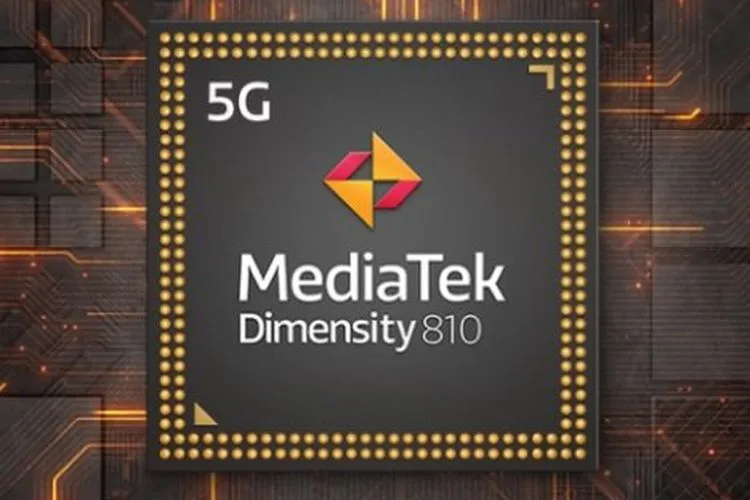
One smartphone that uses the Dimensity 810 is the realme Narzo 50 5G. I had the chance to review this phone, and I can confirm that it handles heavy games and demanding tasks very well.
Built with TSMC’s 6nm process, the Dimensity 810 offers power efficiency on par with flagship chipsets. It has eight cores: two high-performance Cortex A76 cores running at 2.4 GHz and six efficient Cortex A55 cores at 2 GHz.
For smooth gaming, the chipset uses a Mali G57 GPU with two cores running at 850 MHz. The HyperEngine 2.0 technology helps manage CPU, memory, and GPU resources efficiently, reducing lag.
In photography, the Dimensity 810 includes MFNR and NCTF noise reduction to improve picture quality, especially in low light. It supports cameras up to 64 MP.
The chipset supports Full HD+ screens with a 120 Hz refresh rate, which is more than enough to offer a smooth experience while gaming or watching videos.
Interestingly, the Dimensity 810 is basically the same as the Dimensity 6080. In fact, the Dimensity 6080 is a rebranded version of the 810. The main difference is camera support—the 6080 supports cameras up to 108 MP, while the 810 supports only up to 64 MP.
The Dimensity 810 scores about 431,162 points on AnTuTu v10 and has Geekbench 6 scores of 781 (single-core) and 1947 (multi-core).
9. Snapdragon 4 Gen 2
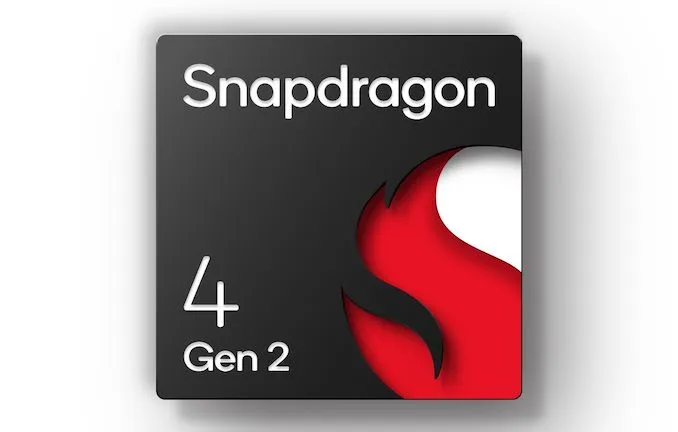
You might be surprised, but the Snapdragon 4 series can deliver strong performance, even competing with some Snapdragon 7 series chipsets. The Snapdragon 4 Gen 2, launched in June 2023, is a good example.
This is the first Snapdragon 4 series chip to support 3GPP Release 16 5G, thanks to the Qualcomm X61 modem. It’s also the first in the series built on a 4nm process, which makes it more power-efficient than the Dimensity 6080’s 6nm chip. Qualcomm claims the Gen 2 has a 10% performance boost over the Snapdragon 4 Gen 1.
The Snapdragon 4 Gen 2 features eight cores: two high-performance Cortex A78 cores at 2.2 GHz and six energy-saving Cortex A55 cores at 2 GHz.
For graphics, it uses the Adreno 613 GPU running at 955 MHz, which outperforms the Dimensity 6080’s Mali G57 MP2 GPU at 950 MHz.
It also includes many multimedia and camera features, supporting Full HD+ screens with a 120 Hz refresh rate. It can handle single cameras up to 108 MP, offers electronic image stabilization (EIS), and supports video recording at 1080p/60 FPS or 720p/120 FPS.
Despite being an entry-level chipset, it supports LPDDR5x memory up to 3.2 GHz and UFS 3.1 dual-channel storage. By comparison, the Dimensity 6080 supports only LPDDR4x at 2133 MHz.
The Redmi 12 5G was the first phone to use the Snapdragon 4 Gen 2, launching globally in August 2023. Other phones with this chipset include the Redmi Note 13R Pro, POCO M6 Pro, and Redmi Note 12R.
In benchmarks, the Snapdragon 4 Gen 2 scores similarly to the Dimensity 6080, both around 420,000 points. Specifically, it scored 423,949 points on AnTuTu, almost the same as the Dimensity 6080’s 424,581.
Geekbench 6 results show the Snapdragon 4 Gen 2 scoring 924 on single-core tests, which is 20% higher, and 2142 on multi-core tests, 4% higher than the Dimensity 6080.
10. Snapdragon 750G

Although it was released three years earlier, at the end of 2020, the Snapdragon 750G can still compete with the Dimensity 6080, which came out in 2023. This chipset is designed to bring 5G connectivity to mid-range smartphones.
The Snapdragon 750G is built on an 8nm manufacturing process and uses the Snapdragon X52 modem, the same modem found in the Snapdragon 765G.
It has an octa-core setup, including two high-performance Cortex A77 cores running at 2.2 GHz, paired with six power-efficient Cortex A55 cores running at 1.8 GHz.
The Kryo 570 CPU in this chipset delivers about 20% better performance than the Kryo 470 found in the Snapdragon 730G. It also comes with an Adreno 619 GPU, which is around 10% faster than its predecessor.
The Snapdragon 750G supports Game Colour Plus and Adreno HDR Fast Blend, which improve HDR10 graphics rendering. It can record 4K HDR10 videos and supports single cameras up to 192 MP.
Like the Dimensity 6080, this chipset supports LPDDR4x memory running at 2133 MHz but allows up to 12 GB of RAM. It is compatible with UFS 2.1, 2.2, and 3.0 storage types.
In AnTuTu v10 benchmarks, the Snapdragon 750G scores about 443,000 points—around 5% higher than the Dimensity 6080’s 424,000 points. Despite similar overall scores, the Dimensity 6080 has some benefits, including smaller transistor size and higher CPU and GPU clock speeds.
The first phone to use the Snapdragon 750G was the Xiaomi Mi 10T Lite. Other models include the Redmi Note 9 Pro 5G, Samsung Galaxy A52 5G, Samsung Galaxy M23, Sharp Aquos Zero 6, and Fairphone 4.
These are some chipsets comparable to the Dimensity 6080. Now that you know your options, you can make a better choice based on your smartphone needs. Hope this helps!
